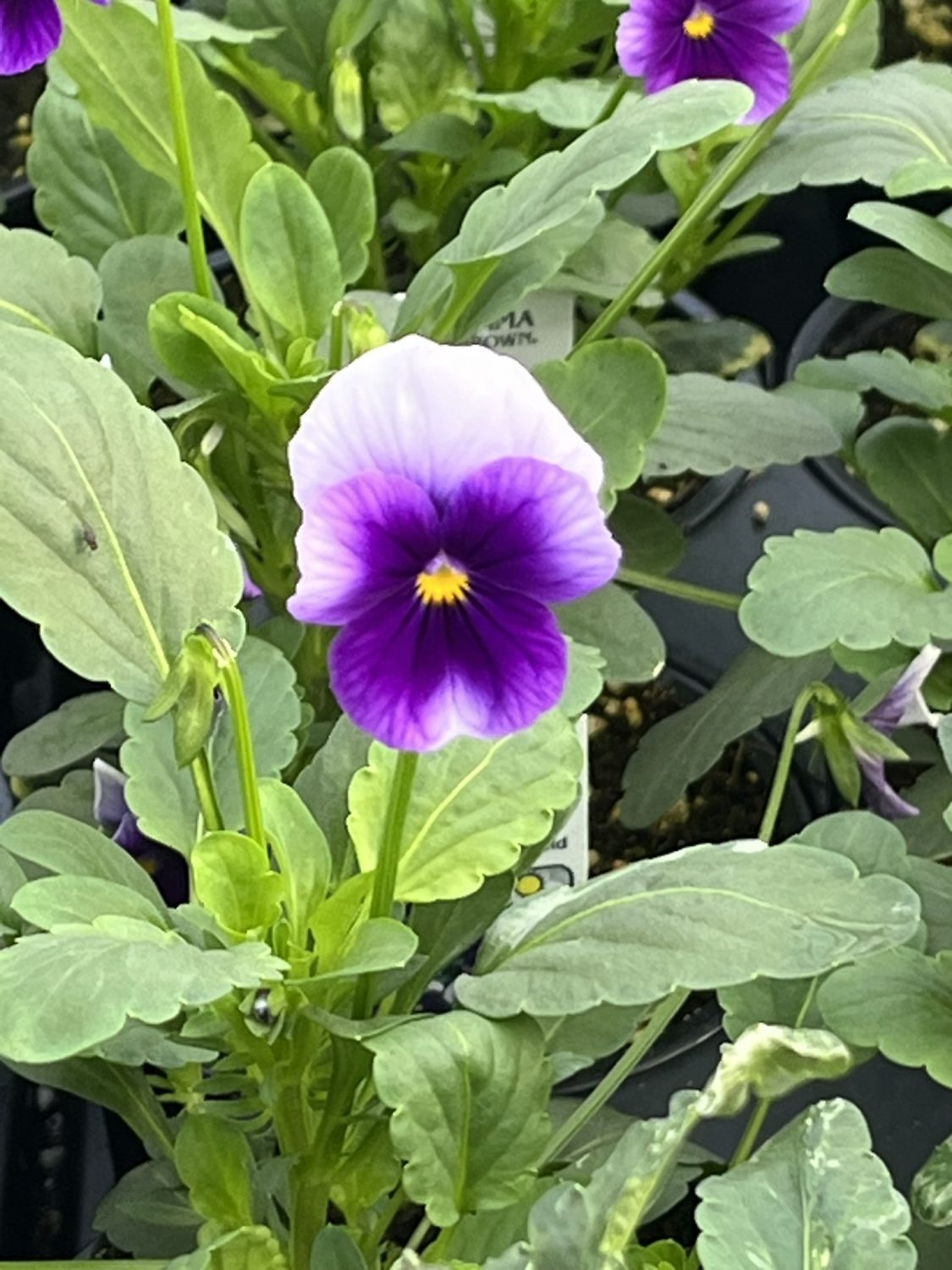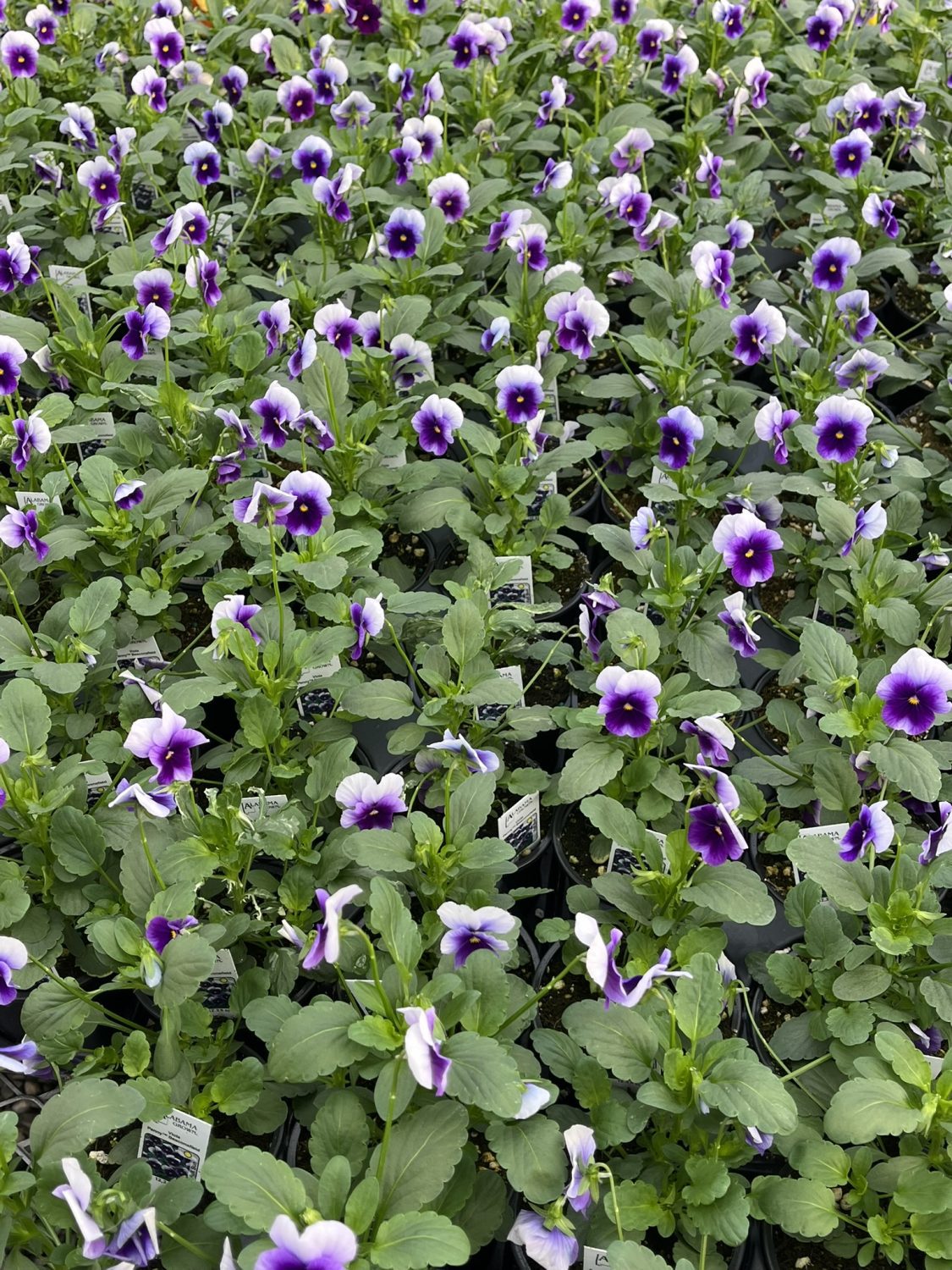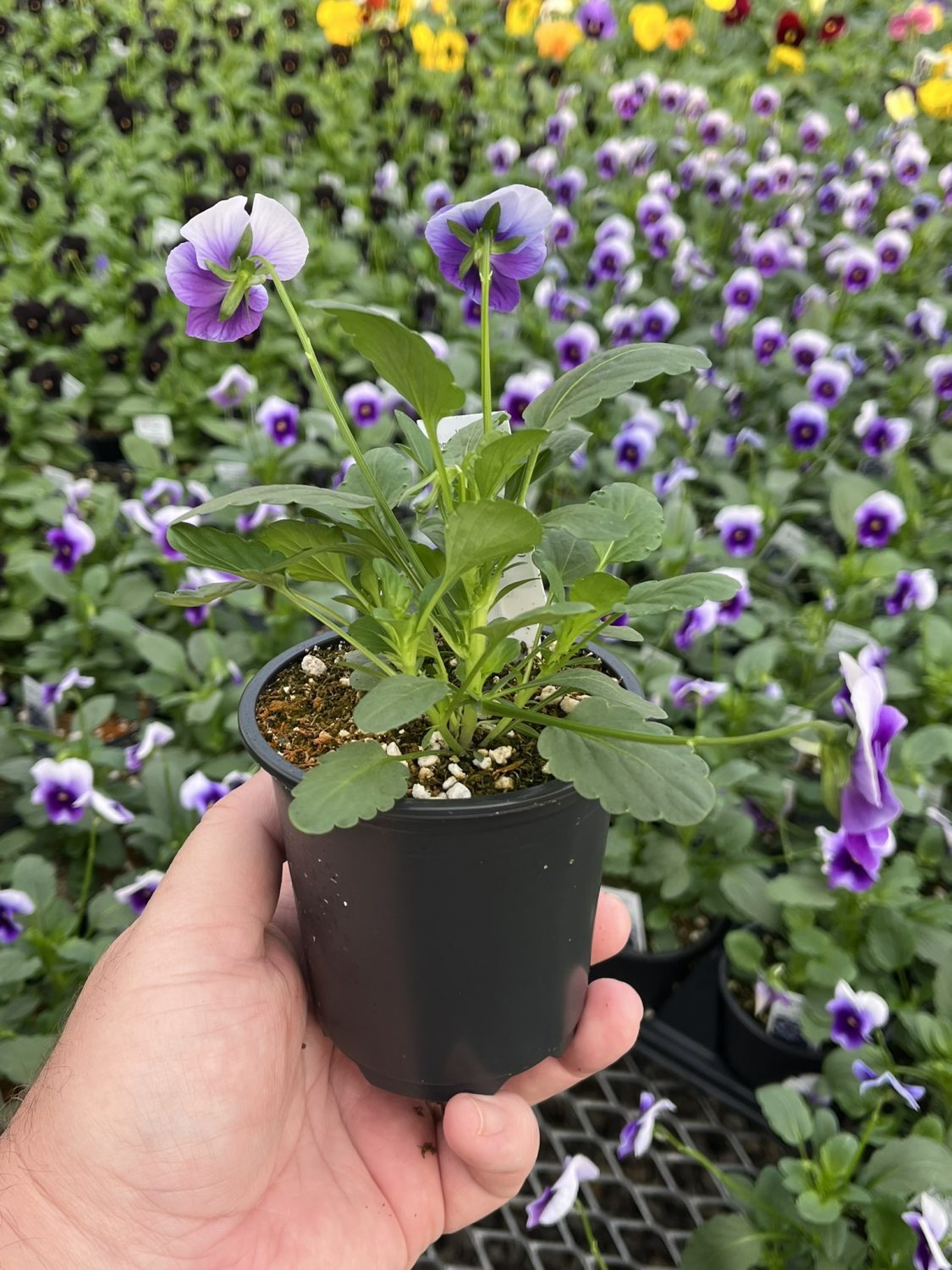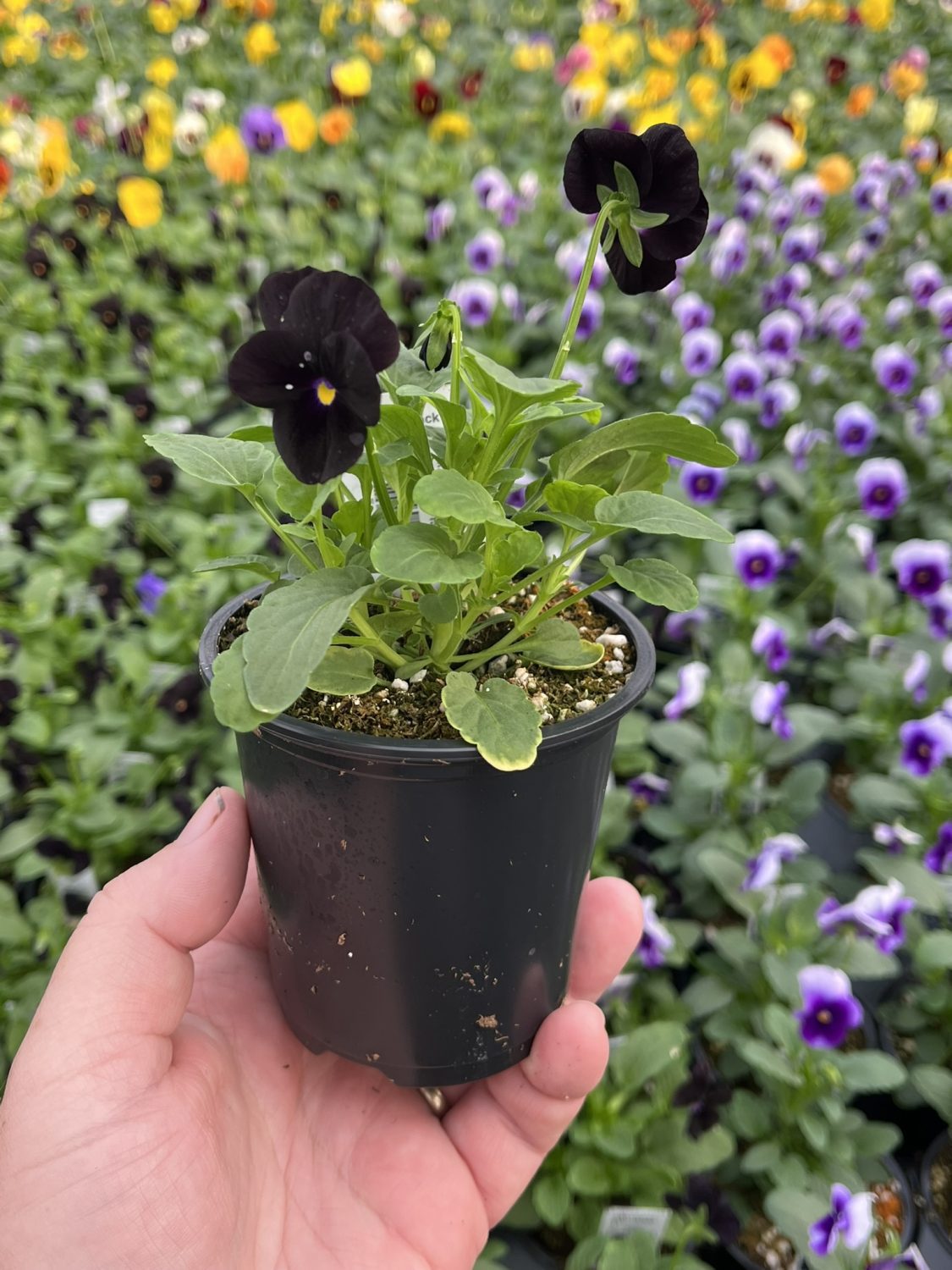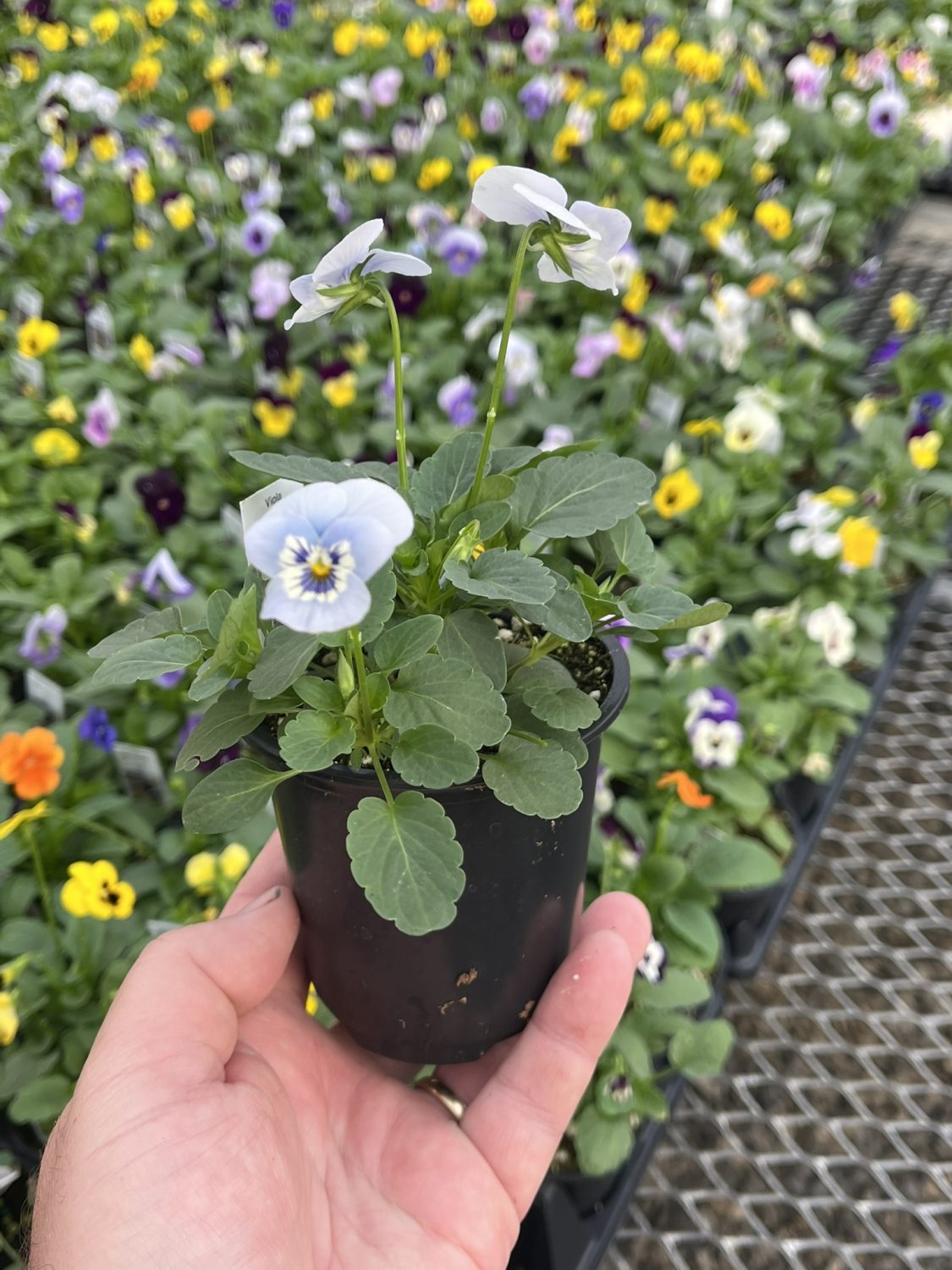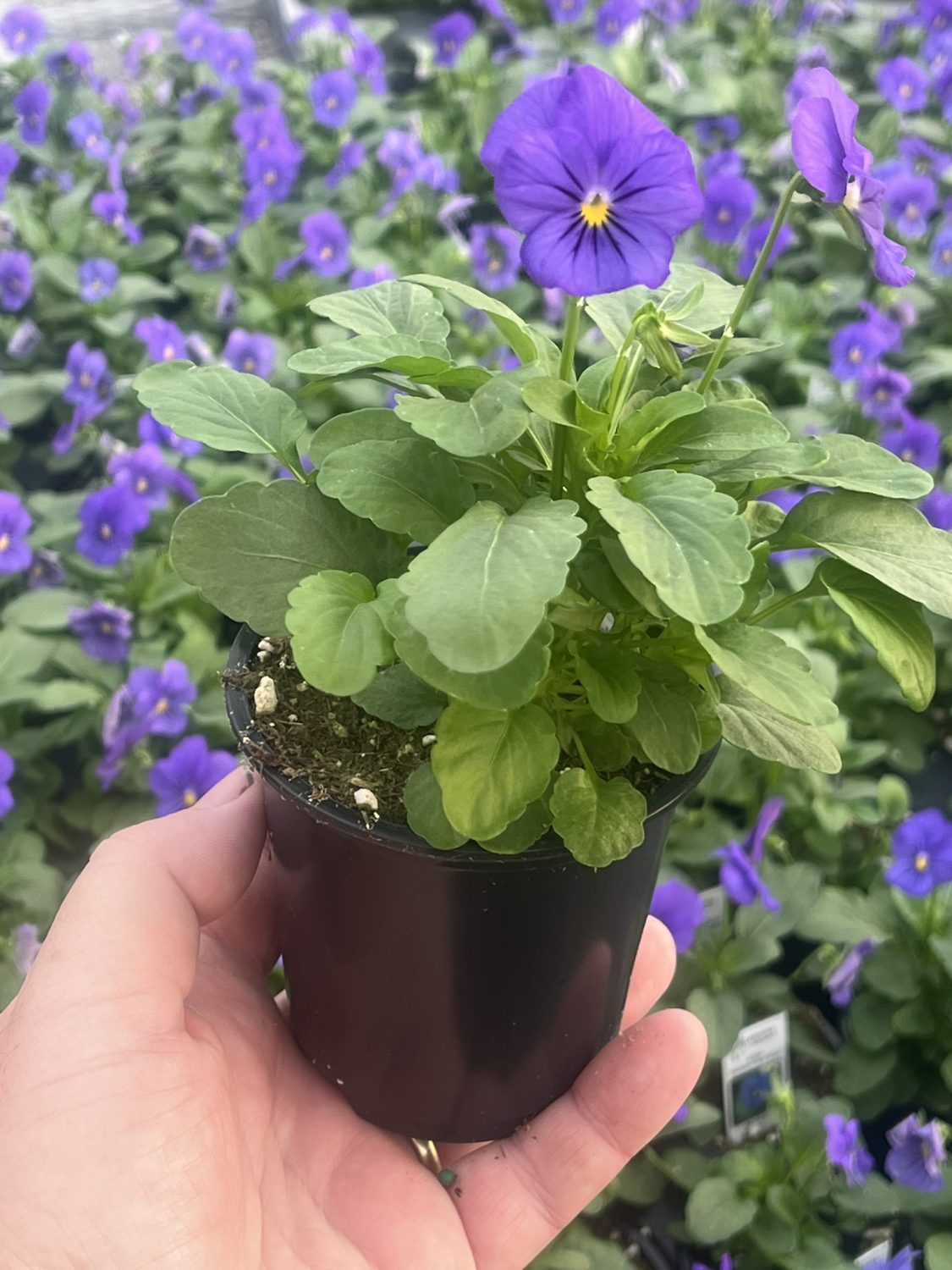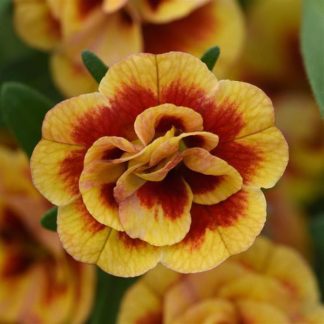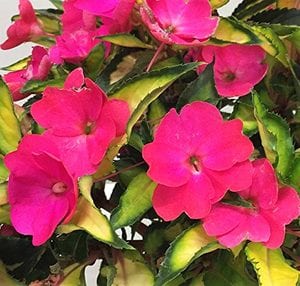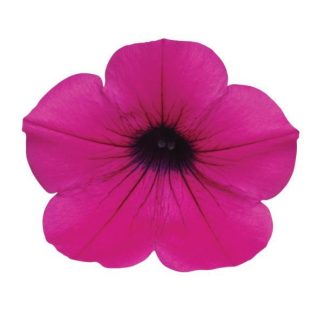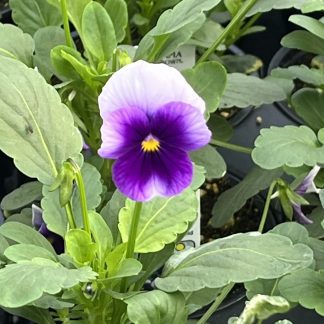Description
Viola ‘Beaconsfield’ — The Classic Two-Tone Viola with Heart
If you love cool-season color with a touch of drama, Viola ‘Beaconsfield’ is your plant. The blooms are a graceful blend of deep violet on the upper petals and soft lavender to white on the lowers, with a sunny eye and fine whiskers. It looks like a tiny watercolor painting. But most of all, it looks fresh day after day. We plant it for fall and spring. We enjoy it for months.
In this guide, we’ll show you what makes ‘Beaconsfield’ special, how to plant it, and how to keep it blooming. We keep things simple. We keep them clear. And we use steps that work for busy gardeners like us.
Why We All Love ‘Beaconsfield’
- True two-tone color. Rich violet tops, pale lower petals, and a bright eye.
- Long cool-season bloom. Fall to spring in mild regions. Spring to early summer in cooler zones.
- Tidy habit. Compact mounds that look finished right away.
- Bee-friendly. Early nectar when little else is open.
- Easy care. Quick to plant, quick to please.
In other words, this viola brings elegance without effort. It pairs with almost any color. It calms hot palettes. It also plays well with bold yellows and oranges. The look is clean. The vibe is peaceful.
Plant Profile at a Glance
Botanical group: Viola × wittrockiana selection
Common name: Viola ‘Beaconsfield’ (often called pansy-type viola)
Height: 6–8 inches
Spread: 8–10 inches
Habit: Low, mounded, and dense
Bloom time: Cool months; peak in early spring
Fragrance: Light and sweet on warm days
Foliage: Soft green, rounded leaves
The plants hold their shape. They do not flop when grown in good light. After more than a few weeks, the mounds knit together into a neat blanket of color.
Where ‘Beaconsfield’ Thrives
Sun: Full sun to part shade; in warm climates give afternoon shade.
Soil: Loose, well-drained, and rich in organic matter.
pH: Neutral to slightly acidic.
Water: Even moisture; never soggy.
Violas like cool roots. Mulch helps. A one-inch layer keeps moisture in and weeds out. Instead of fighting dry soil, you give the plant an easy life.
Best Planting Windows
- Cool and cold zones (3–6): Plant in early spring as soon as the soil can be worked. You may also plant in early fall for late fall color if you protect young plants before hard freezes.
- Moderate zones (6–8): Plant in fall for winter and spring bloom.
- Warm zones (8–10): Plant in fall. Provide light shade as spring heat arrives.
If a hard freeze is coming, cover new plantings with frost cloth at dusk. Remove it in the morning. Simple protection. Big results.
Step-by-Step Planting
1) Prepare the bed.
Loosen the top 8–10 inches. Mix in compost. Break clods. You want a crumbly, well-drained bed.
2) Set spacing.
Place plants 8–10 inches apart. They fill fast.
3) Plant level.
Keep the crown at the same depth as the nursery soil. Firm gently. Water to settle.
4) Mulch lightly.
Add a thin mulch to steady moisture and keep roots cool.
5) First feeding.
Blend in a slow-release, balanced fertilizer at planting. It sets the tone for steady growth.
Easy Care That Works
Watering
Keep soil moist but not wet. Let the top inch dry slightly between waterings. Containers dry faster; check with a fingertip each day.
Feeding
Use a balanced, slow-release fertilizer at planting. Then, every 4–6 weeks, give a light dose of water-soluble feed. Little and often. That’s the key.
Deadheading
Pinch spent blooms and seed pods. This directs energy to new buds. It takes a moment. It pays off for months.
Heat management
When warm days arrive, bloom can slow. Add afternoon shade and steady moisture. In many regions, fall plantings give the longest show.
What Makes ‘Beaconsfield’ Stand Out
Many violas are pretty. ‘Beaconsfield’ is memorable. The bicolor face creates depth. The violet top petals frame the pale lowers. The whiskers pull your eye to the center. In an overcast garden, the flowers glow. In bright spring sun, they gleam. We love the way each bloom reads from a distance and rewards a closer look.
Design Ideas You Can Copy Today
Classic cool palette
Pair ‘Beaconsfield’ with white alyssum, silver dusty miller, and lavender. The bed feels calm and airy. It shines at dawn and dusk.
Bold contrast
Set it with yellow daffodils or orange violas. The two-tone bloom bridges the gap between cool and warm hues. The border pops.
Soft edging
Line a front border with a single row. The mounds are tidy. The edge looks finished.
Containers that sing
Use a shallow bowl or window box. Combine ‘Beaconsfield’ with trailing lobelia, ivy, or licorice plant. Add a small grass for height. Water well. Instant charm.
Underplant spring bulbs
Tuck violas between tulips, narcissus, and grape hyacinths. After the bulbs fade, the violas keep the show going. In other words, no awkward gaps.
Companion Plants That Love the Same Conditions
- Spring bulbs: Tulips, daffodils, hyacinths, muscari
- Cool-season annuals: Pansies, snapdragons, dianthus, nemesia, sweet alyssum
- Edibles for flair: Curly parsley, chives, leaf lettuce, kale (ornamental or edible)
- Foliage foils: Heuchera, dusty miller, lamb’s ear
These partners share the same needs: cool roots, steady moisture, gentle feeding. They make the violet-and-white blooms stand out.
Growing in Pots, Steps, and Railings
You do not need a big bed to enjoy ‘Beaconsfield’. A porch step is enough.
- Choose a pot with a drainage hole.
- Fill with a high-quality potting mix.
- Plant 3 plants in a 12-inch bowl for a full look.
- Water when the top inch feels dry.
- Rotate the pot weekly so all sides see the sun.
That’s it. Simple steps. Happy plants.
Edible Flower Note
Many gardeners use viola petals as a garnish for salads, cakes, and drinks. If you plan to do that, grow them in clean soil and avoid non-edible sprays. Rinse gently. Use fresh. If you grow only for looks, enjoy the view and skip the plate.
Quick Answers to Common Questions
How much sun do we need?
Full sun in cool weather. Part shade as days warm. In heat, give afternoon shade.
How often should we water?
Keep even moisture. In containers, check more often. Wind and sun dry pots quickly.
Do we need to deadhead?
Yes. Pinching keeps flowers coming and prevents seed set.
Will ‘Beaconsfield’ reseed?
Sometimes. If you let pods mature, you may see volunteers next season.
Are they deer resistant?
They are not a favorite, but deer will sample almost anything when hungry. Use covers or repellents if deer pressure is high.
Troubleshooting Made Simple
Leggy plants
Likely low light or too much warmth. Move to more sun or pinch lightly to shape.
Few flowers
Often heat, heavy nitrogen, or skipped deadheading. Add light shade, switch to balanced feeding, and pinch spent blooms.
Yellowing leaves
Usually soggy soil or poor drainage. Loosen the soil and let it dry slightly between waterings.
Aphids or mites
Rinse with a strong stream of water. Repeat in a few days. Keep plants unstressed with steady care.
How Many Plants to Order
- Edging: 3–4 plants per linear foot
- Mass bed: 5–7 plants per square yard
- Containers: 3 plants per 12-inch bowl; 5–6 for a 24-inch window box
This spacing gives that lush, carpeted look we all want. Instead of gaps, you get full color fast.
Simple Care Calendar
At planting: Compost, slow-release feed, water to settle.
Every week: Check moisture; deadhead spent blooms.
Every 4–6 weeks: Light water-soluble feeding.
Before heat waves: Add afternoon shade if possible; mulch to cool roots.
Before hard freezes (new plantings): Cover at night, uncover in the morning.
Clip this list. It keeps you on track.
Sustainability Notes We Appreciate
Violas thrive in cool weather, so they use less water than many warm-season annuals during spring and fall. They also support early pollinators. Instead of bare beds in the shoulder seasons, you give bees a snack and your garden a glow. That’s a win for all of us.
Why ‘Beaconsfield’ Belongs in Your Cart
We choose plants that do more than look pretty on day one. We want color that lasts. We want shape that stays tidy. We want choices that fit both beds and pots. Viola ‘Beaconsfield’ checks every box. It blends, it contrasts, and it carries your display from chilly mornings to bright spring days. After more than one season, you may find it becomes your standard for cool-season charm. We feel that way, too.
Bring Home the Two-Tone Glow
Ready for crisp violet tops, soft white lowers, and that cheerful yellow eye? Let’s plant Viola ‘Beaconsfield’ together. Small mounds. Big color. Easy wins. Color Steady, Garden Ready.

